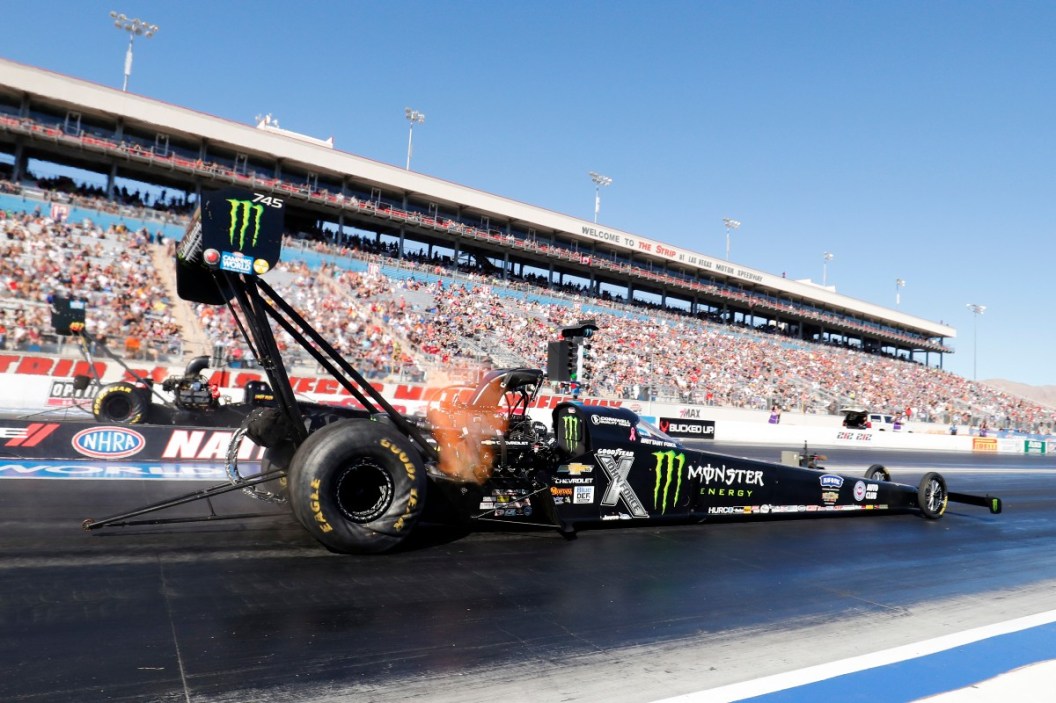Now, there are all sorts of different types of racing series out there, but when it comes down to raw horsepower and speed, it's hard to compare the NHRA to anything else.
Videos by FanBuzz
The concept of drag racing may seem pretty straightforward, but there is more strategy and technique than you may be aware of. After all, it's not exactly easy achieving a fast quarter-mile time in an 11,000-horsepower race car. You need a solid car, grip, lightning-fast reflexes, and most of all, nerves of steel.
Watching these racers and teams put it all together during competition is what makes it so exciting. If you're new to drag racing, you're in for a treat. We're going over six of the most action-packed, heads-up racing classes in the NHRA.
Keep in mind that a variety of motorcycle classes do exist within the NHRA, such as Top Sportsman and Pro Stock Motorcycle, but for this list, we'll just be sticking to cars.
6 Coolest Drag Racing Classes
Top Fuel
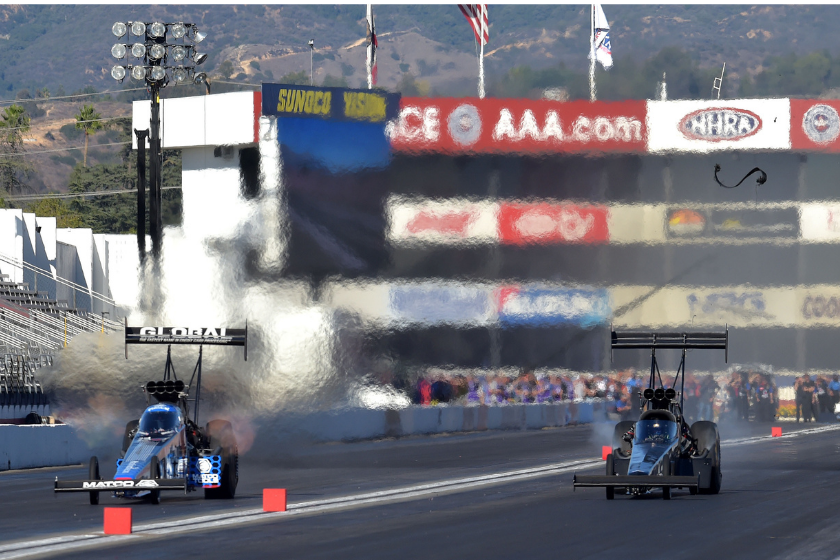
Photo by Will Lester/MediaNews Group/Inland Valley Daily Bulletin via Getty Images
Known as the fastest-accelerating machines in the world, Top Fuel dragsters are no joke. They're nicknamed "king of the sport" for a reason.
These cars produce around 11,000 horsepower, thanks to their supercharged Chrysler/Dodge Hemi-style 500 cubic-inch engines using nitromethane fuel. Throw that inside of a chromoly steel tube chassis with a carbon fiber body, and you've got yourself one hell of a race car.
On the drag strip, they'll move from the start line to the finish line in around 3.7 seconds at over 330 mph. That said, only the most talented drivers can handle a car like that. Watching these top fuelers duke it out certainly makes for some intense competition.
Funny Car
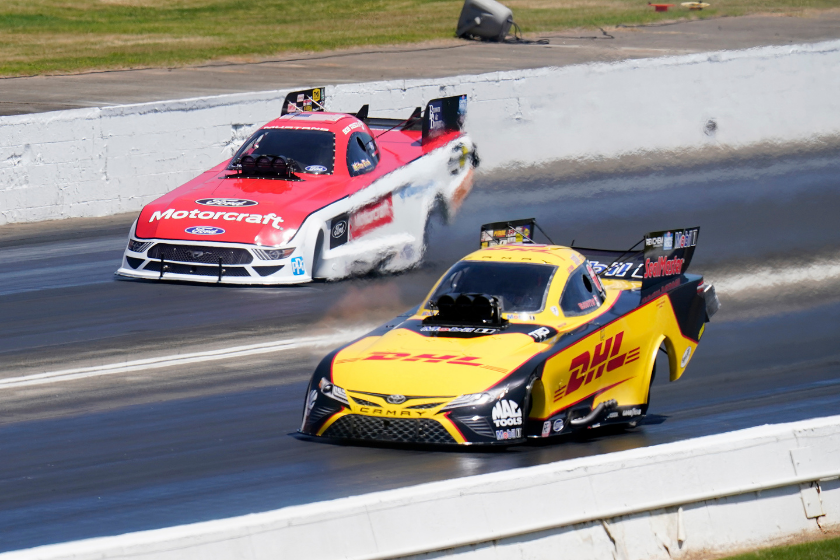
Photo by David J. Griffin/Icon Sportswire via Getty Images
In many ways, Funny Cars are similar to Top Fuel dragsters, despite the difference in body styles. They're powered by the same supercharged 500 cubic-inch engines, and they're capable of finishing a quarter mile in the 3.8-second range at over 330 MPH.
Much like their Top Fuel counterparts, they also don't use a transmission. Instead, they utilize a multistage clutch assembly activated by timers in order to push the power to those giant drag slicks.
The differences include a shorter wheelbase, and they'll use bigger-bodied cars made from carbon fiber. These bodies will vaguely resemble factory models, but as you'll notice, they're far from it. Your eyes will be glued to the raceway when they start competition.
Pro Mod

Photo by Michael Allio/Icon Sportswire via Getty Images
The Pro Mod class allows a host of different vehicles. You typically see a variety of different muscle car or sports car styles involved in competition, and they'll usually be running the quarter mile in high-five-second ranges at over 250 MPH.
The engine sizes and power adders are also open for differentiation. It's within rules to run a supercharger, turbocharger, or nitrous oxide. These are the quickest class of drag cars with working doors — why they're referred to as "doorslammers" — and they also sport replica street car bodies with race-ready trim.
Pro Mod drivers will compete in 10 NHRA Camping World Drag Racing Series events over the course of the season, and I guarantee you won't want to miss out on any of the action.
Pro Stock
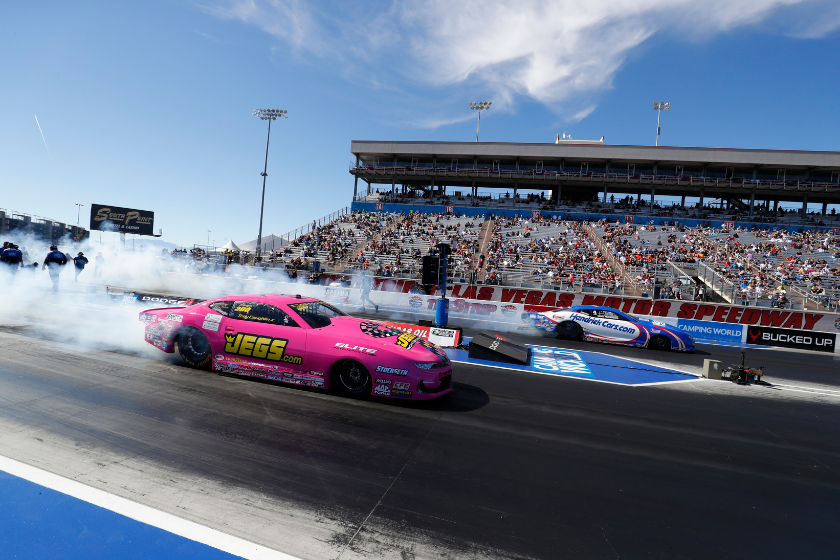
Photo by Jeff Speer/LVMS via Icon Sportswire
Vehicles in the Pro Stock class may resemble production-based cars, but what's under the body makes all the difference. They're often called "factory hot rods" because of their looks.
They utilize a sophisticated tube chassis and four-link drag suspension, and some say they're one of the most technologically advanced vehicles in the sport. Restrictions require them to abide by precise measurements, and they must weigh at least 2,350 pounds.
Using a maximum of 500 cubic-inch engines, they use electronic fuel injection and spec gasoline (as opposed to methanol) to produce somewhere in the range of 1,300 horsepower. As a result, a Pro Stock car can knock out a quarter-mile in 6.5 seconds at 210 mph. Occasionally, they'll also do some sweet wheelies, if you're lucky.
Super Street

AMS Performance / Barcroft Cars UK Office
Another variable class is Super Street. There's still a few requirements that they need to abide by, and unlike many other classes, they must beat their competitor while staying under a 10.9-second index (elapsed time). Similar to other bracket racing classes, they will face elimination if they break out from the time.
The vehicles used in competition are full-bodied cars weighing a minimum of 2,800 pounds. Six-cylinder cars cannot weigh less than 2,000 pounds, while four-cylinder and rotary cars are limited to 1,200 pounds minimum. As far as engine and chassis modifications, racers can do practically anything they'd like.
During competition, racers will use a five-tenths pro tree, making reaction time extremely significant. It's important that they dial-in their car perfectly. Regardless of their success, it makes for a great spectator show.
Top Alcohol Dragster
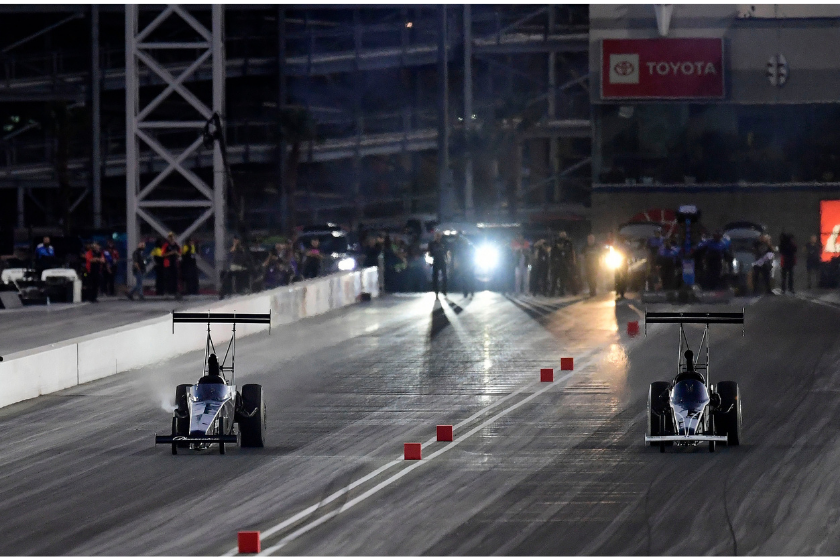
Photo by Will Lester/MediaNews Group/Inland Valley Daily Bulletin via Getty Images
At first glance, you may think Top Alcohol dragsters are the same as Top Fuel dragsters, but there is actually a big difference when it comes to powertrains. Let's talk specifications.
For one, Top Fuel cars are supercharged and use nitro-burning engines, while Top Alcohol cars are limited to the choice of either a supercharged methanol engine or an injected nitromethane engine. The supercharged cars will use a three-speed transmission, whereas the injected nitro cars do not use a transmission at all.
They're restricted to a maximum wheelbase of 300 inches, and typically weigh anywhere from 1,975 to 2,125 pounds. All said and done, they'll complete the quarter mile in 5.1 seconds at a speed of 285 mph. They may not be as fast as Top Fuel, but you'll know they mean business the second they heat up their tires during the burnout.
Stock Cars, Super Stock, Super Comp, Super Gas, and Super Pro round out some of the other awesome NHRA classes, but when it comes to the six sweetest, look no further than this breakdown.
This post was originally published on January 6, 2022.
